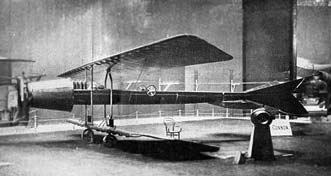Explore the Coanda Model 1910, a pioneering aircraft in aviation history. Discover its development, design, performance, and military legacy.
This article delves into the remarkable history of the Coanda Model 1910, an early experimental aircraft that made significant contributions to aviation. It covers the aircraft’s development, design, performance, military use, and its enduring impact on the field of aviation.
The Coanda Model 1910 emerged during a transformative period in aviation history, characterized by rapid experimentation and innovation. In the early 20th century, aviation was still in its infancy, and aircraft were undergoing constant development. The need for more efficient and controllable aircraft was evident, and this drove the development of the Coanda Model 1910.
The program for the Coanda Model 1910 was launched to address the challenges of achieving controlled flight. It aimed to explore unconventional aircraft designs and propulsion methods. The aircraft made its first flight in 1910, marking a significant milestone in aviation history. The NATO nickname for the Coanda Model 1910 is not applicable, as NATO did not exist at the time.
History of the Development of the Coanda Model 1910
The early 20th century was a period of great experimentation in aviation, with inventors and engineers seeking to conquer the skies. The Coanda Model 1910 was conceived as an innovative aircraft designed by Romanian inventor Henri Coanda. Its objective was to explore the possibility of achieving controlled flight using unconventional methods.
The aircraft featured a unique design with a saucer-like fuselage and an innovative engine placement. It was powered by a 4-cylinder, 50-horsepower engine, and its design incorporated a circular wing. The Coanda Model 1910 was a pioneering attempt at utilizing the Coanda effect, which involved using exhaust gases to create lift. However, this experimental design had both advantages and drawbacks.
Design of the Coanda Model 1910
The Coanda Model 1910’s design was unconventional for its time. Its circular wing and saucer-shaped fuselage were experimental and aimed at harnessing the Coanda effect, which allowed the exhaust gases to flow over the wing surface, providing lift. This design innovation brought a unique aerodynamic approach to aviation.
Advantages of this design included stability and simplicity, which made it relatively easy to control in flight. However, the Coanda Model 1910 had limitations in terms of speed and maneuverability compared to conventional aircraft of the era. Its circular wing design also restricted the payload capacity.

Performance of the Coanda Model 1910
The Coanda Model 1910’s performance was modest in comparison to contemporary aircraft. It was powered by a 50-horsepower engine, which allowed it to achieve a top speed of approximately 40 miles per hour (64 kilometers per hour) and reach altitudes of around 500 feet (152 meters). Its range was limited, typically flying short distances.
While the Coanda Model 1910 was a pioneering experiment, it did not prove to be a powerful or competitive aircraft compared to conventional designs of the time.
Military Use and Combat of the Coanda Model 1910
The Coanda Model 1910 was primarily an experimental aircraft and did not see military combat. It was not equipped with armaments and was not used in conflicts or operations.
The Coanda Model 1910, with its innovative design and experimental approach to aviation, represents an important chapter in the history of flight. Although it did not become a practical or powerful aircraft for its time, it contributed to the ongoing exploration of aviation technology and design principles. Henri Coanda’s pioneering work laid the foundation for future advancements in aircraft design and propulsion, and the Coanda effect remains a subject of study and application in modern aviation.
Back to the experimental aircraft section.